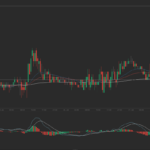The Japanese yen advanced to the strongest level in almost two weeks against the US dollar as rising tension in Ukraine and the complicated geopolitical situation on the Crimea peninsula, boosted demand for the Japanese currency as a safe-haven. The yen was also supported after data showed the nations inflation rate accelerated to a 5-year high last month, easing speculation Bank of Japan will expand its stimulus.
USD/JPY hit a session low at 101.56 at 04:55 GMT, after which the pair traded at 101.71 by 09:58 GMT, losing 0.41% for the day. Support was likely to be found at February 17th low, 101.39, while resistance was to be met at February 27th high, 102.45.
The newly-elected Ukrainian prime minister Arseniy Yatsenyuk already started searching international financing to avert a default, while separatist tensions in the southern pro-Russian Crimea region continue to rise. The rising tension in Ukraine forced the Russian President Vladimir Putin to order military exercises on February 26th, including 150 000 troops, located in the central and western military districts of Russia, including areas bordering Ukraine, the Interfax news agency reported yesterday.
“The situation in Ukraine is escalating and the uncertainties in emerging markets are encouraging yen buying,” said Masakazu Sato, a Tokyo-based foreign-exchange adviser at Gaitame Online Co, cited by Bloomberg. “Japan’s CPI was in line with estimates, and bets for imminent additional easing by the BOJ may get pared back. That is providing a floor for the yen.”
The Japanese Statistics Bureau reported yesterday that consumer prices excluding fresh food rose 1.3% in January compared to a year ago, in line with analysts estimates and matching Decembers increase, which was the highest since October 2008.
Last week, Bank of Japan kept its pledge to expand the money supply by an annual 60 trillion yen to 70 trillion yen and announced Japan’s banks may borrow twice as much low-interest money than they previously did under a second facility.
Only 12% of economists in a Bloomberg survey conducted on February 6th forecast the central bank will add to stimulus this quarter.
The yen devalued 18% against the US dollar last year amid unprecedented central banks stimulus, the most since 1979, but has rebounded 3.8% this year after a rout in emerging markets, fueled demand for haven assets, including the Japanese currency.
Meanwhile, Federal Reserve Chair Janet Yellen said that the central bank will probably continue with its plan to gradually reduce the scale of monthly asset purchases, while policy makers are trying to determine whether the weakness economy has recently demonstrated is due to temporal factors.
“Unseasonably cold weather has played some role,” she said in her testimony in front of the Senate Banking Committee on Thursday. “What we need to do, and will be doing in the weeks ahead, is to try to get a firmer handle on exactly how much of that set of soft data can be explained by weather and what portion, if any, is due to softer outlook.”
Yellen indicated that the Federal Reserve is abandoning its numerical threshold, that has linked any decision to increase borrowing costs to nation’s rate of unemployment. She also reiterated what the central bank has already said in a number of statements – that the scale back of monetary stimulus will continue at a “measured pace”, while the bond-purchasing program will likely be exited in the fall.
In addition, the Department of Commerce said yesterday that US durable goods orders, fell 1% in January, following a revised 5.3% drop in the previous month. Analysts had anticipated that bookings for durable goods or those meant to last at least three years will decline 1.7% last month.
Orders for durable goods, which exclude volatile transportation items, rose 1.1% in January, confounding experts’ forecasts of a 0.3% drop. December’s core durable goods orders have been revised down to a 1.9% decline from a previously estimated 1.6% drop.
A separate report revealed that the number of initial jobless claims in the United States rose by 14 000 to reach 348 000 during the week ended on February 22nd, while analysts had projected a decline to 335 000. This higher-than-expected number of Americans, who filed for unemployment benefits last week, boosted concerns that nation’s labor market is demonstrating an uneven recovery.
Elsewhere, GBP/USD hit a session high at 1.6744 at 07:45 GMT, after which consolidation followed at 1.6734, adding 0.27% on a daily basis. Support was likely to be received at February 27th low, 1.6677, while resistance was to be encountered at February 17th high, 1.6823, also the pair’s highest since November 2009.





